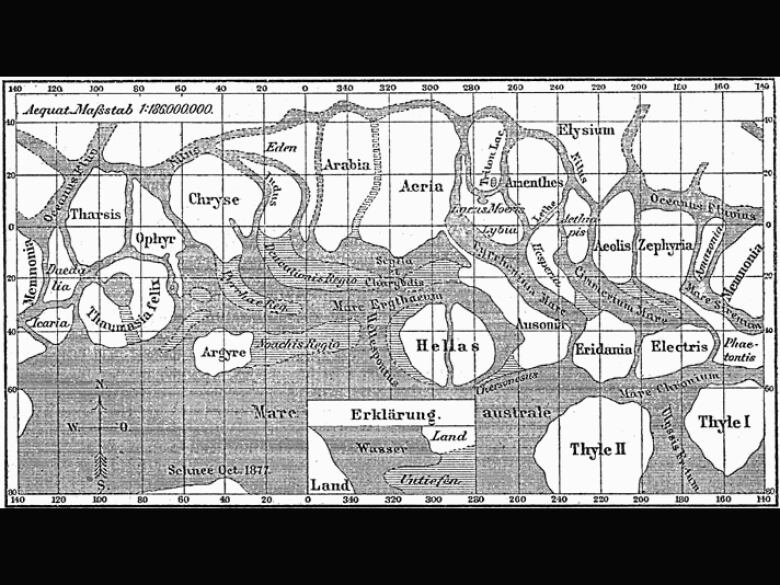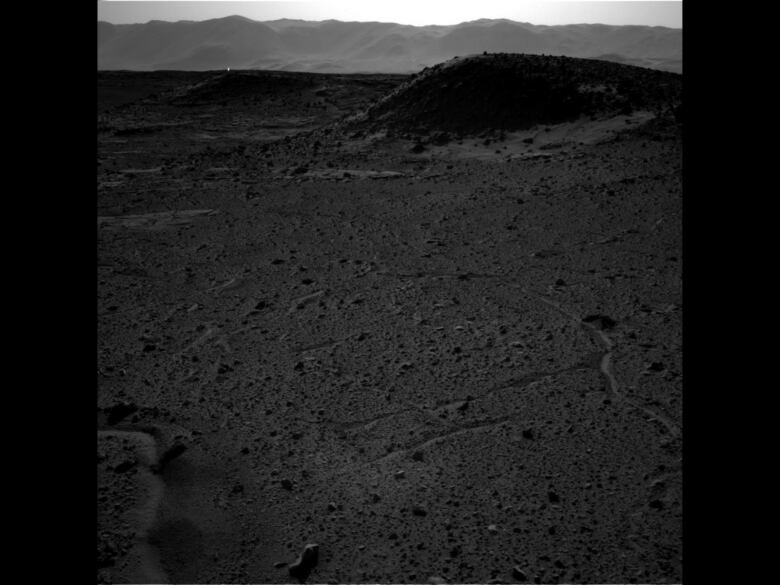Mars mysteries: Giant plumes, the jelly doughnut and more
Scientists can't explain cloud-like plumes above surface of the red planet

Huge cloud-like plumes are just the latest red-planet mystery to captivate our attention.
Scientists still do not know what to make of the plumes, which were spottedalmost three years ago.
In anessay this week in the journal Nature, a team of international scientists estimate the plumes rose250 km above the planets surface, covering an area of 1,000 km by 500 km.
But scientists cannot say for sure how the plumesrose or what they are made of.
This anomaly is only one of many from ourneighbouring planet that has sparked our earthling curiosity and imagination. Here are five other red-planet mysteries.
The face on Mars

NASAs Viking 1 spacecraft took photographs of a human-like "face" on the planets surface in 1976. Ever since, the face on Mars has been talked about in movies, television, radio, and magazines.
While some believed the face was built by aliens, NASAsaid itwas an optical illusion caused by the angle of the sun.
Satellite images taken several years after it was first photographed found the face was actually a natural land form not resembling a face at all.
Martian canals

Astronomer Giovanni Virginio Schiaparelli began mapping and naming areas on Mars in 1877. He saw channels on the planet and labelled them "canali."
This term was misinterpreted to mean canals and because of this, many people widely believed the planet had intelligent life that created these waterways.
While scientists later debunked this belief, satellite images show the red planet may have once had natural channels containing fast-moving water.
The jelly-doughnutrock

Early last year, the Mars Opportunity rover baffled NASA scientists when it produced an image that looked likea pastry-shaped object on the planets surface.
The photos, taken in the same spot12 days apart, show the object in the second photo but not in the first. NASA scientist Steve Squires told reporters that it looked like a jellydoughnut.
But the jellydoughnut was actually a rock that NASA scientists believe was likely kicked into the spot as the rover moved around.
Mysterious lights

UFO conspiracy theorists believed images from NASAs Curiosity rover showed aliens landing on the red planet.
Mysterious lights appearing in the photos werethe proof, according to the conspiracy theorists who expressed their beliefs on social media.
NASA scientists said the so-called lights were in fact straycosmic rays sometimes seen in space.
Is it a rat or a squirrel?

Some say it looks like a rat. Others say it looks like a squirrel.
In 2012, images from the Curiosity rover showed an orange rodent-shaped rock. Some believed it was an actualrodent hiding among other rocks.
A close-up of the image shows what looks like eyes, a nose, arms, and a sprawled-out body.
But it's really just another rock.
More Mars photos
Some notable shots captured by the Mars rovers in 2014.












_(720p).jpg)


 OFFICIAL HD MUSIC VIDEO.jpg)
.jpg)



























































































